Indian Head Cents
Posted by Tom Deaux on Feb 11th 2021
Background
The US Mint ended production of Large Cents in 1857. The new Flying Eagle small cent was made in 1856, but in Proofs versions only. Business Strike Flying Eagles began production in 1857 and ended in 1858.
Flying Eagles are 88% copper and 12% nickel. They’re the same 19mm diameter as modern cents, but a little thicker.
The New Small Cents
Flying Eagle Small Cents are considerably smaller than the Large Cents. The Large Cents were made of solid copper while the Small Cents were made of 88% Copper and 12% Nickel.
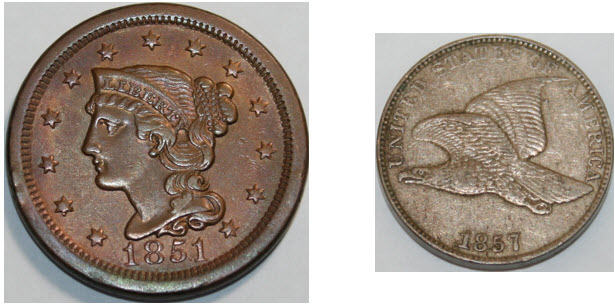
Indian Head Cents
The Indian Head Cent replaced the Flying Eagle starting in 1859. The obverse has Liberty with an American Indian headdress. The reverse has a wreath that is open at the top with a bow at the bottom.

Second Year Redesign
The reverse was changed in 1860 and has a small shield at the top of the wreath. The redesigned wreath takes more of the space in the fields.
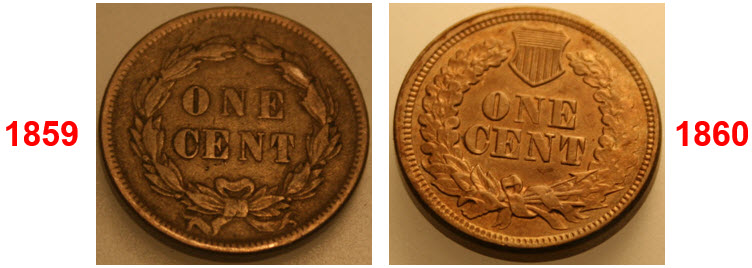
Makeover in 1864
Changes were made in 1864 but the design was unchanged. The metal alloy was changed from Copper/Nickel (88/12) to Bronze (90/10 Copper/Tin). The Bronze coin is the same 19mm diameter but it is noticeably thinner and lighter. In fact the best way to tell the early Copper/Nickel Indians from the Bronze versions is to look at the edge of the coins.
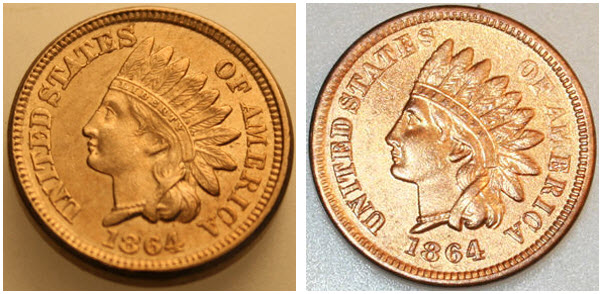
51 Years of Production
All Indian Cents before 1908 were made in Philadelphia. In 1908 and 1909 they continued to make them in Philadelphia, but they also produced them (in smaller quantities) in San Francisco. A consequence is that two of the scarcest Indian Cents are the 1908-S and the 1909-S.

Mintage 1859 to 1909
In the graph of mintage of Indian Cents over the years you can see a “lull” in production that lasted over 10 years. These are the years that hold many of the most popular (and most valuable) coins of the series.
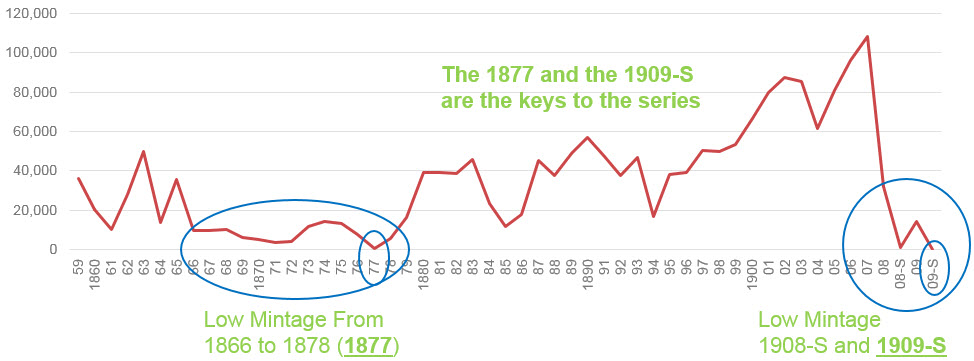
Two Keys to the Series
The 1877 cent is one key to the complete collection of dates for the series. Here are two examples, one with quite a bit of detail and the other well worn.
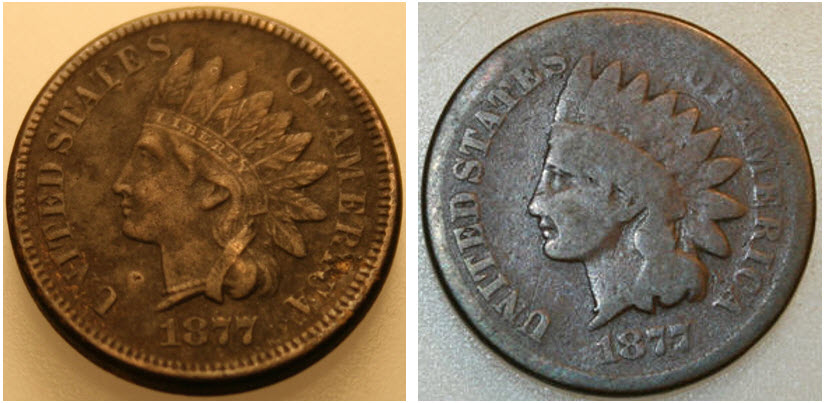
The Second Key
The other key is the 1909-S. The 1909-S has a lower mintage than the 1877, which suggests that it should have a higher value, but in fact it has a lower value than the 1877. This apparent contradiction may be due to the theory that the published mintage for the 1877 cent is not correct.
In support of this theory, it is known that all of the 1877 cents were made with the same reverse die. The dies for these coins were known to wear out at around 100,000 strikes. In any case, valuation follows the number of issues remaining, not the number struck.
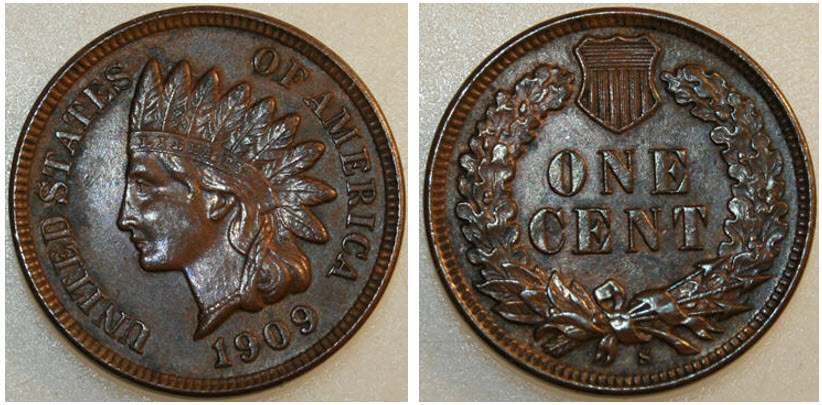
Numerous Scarce Issues
The 1877 and 1909-S key coins are scarce by definition. In addition to the keys, the other 12 coins in the range from 1866 to 1878 are challenging.

Summary
This has been a brief introduction to US Indian Cents. Indian Cents were the second type of US Small cents after the Flying Eagle. From 1859 to 1907 all Indian Cents were manufactured in Philadelphia. In 1908 and 1909 they were manufactured in Philly and San Francisco. There are 2 keys and quite a few other scarce issues that make this set challenging to complete
Happy Hunting!
